RAIZIN vs SAMURIDE
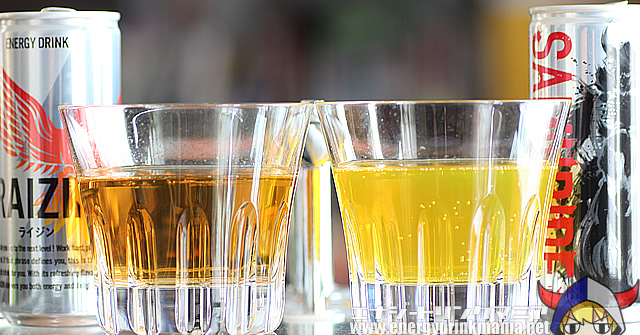
When it comes to ginger-flavored energy drinks in Japan, these two—Raizin and Samurai-do—come to mind. Raizin was revamped and re-released by Taisho Pharmaceutical in 2015, and its flavor and product itself have shifted more towards an energy drink. So, I decided to compare these two ginger-flavored energy drinks. By the way, Energy-Drink-kun isn’t a fan of spicy flavors (;´∀`)
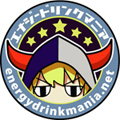 Author: Energy Drink-kun
Author: Energy Drink-kun
In 2001, while living in the United States, I encountered energy drinks through the dance scene and was deeply impressed. After returning to Japan, I found that energy drinks were considered novelty beverages, so I established a comprehensive website in 2013 to share the true appeal of energy drinks. As an energy drink enthusiast, I began drinking them seriously again, collecting over 7,000 varieties of energy drinks from various countries. I am also active as a critic and expert, receiving media interviews.
Comparison of the Flavors of RAIZIN and SAMURIDE!
On the left, the more intense one is RAIZIN, and on the right, the bright gold is SAMURIDE. You can really see the strong carbonation of RAIZIN in the bubbles.
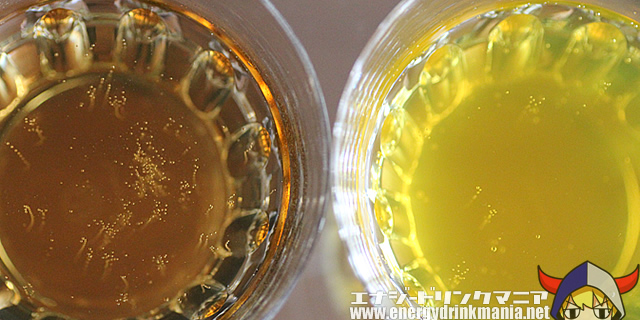
First, RAIZIN
Though it has been updated to a more drinkable sweetness, the spiciness of the ginger is still prominent, and the strong carbonation makes the bubbles pop intensely. If you try to enjoy it in a glass, it’s quite dangerous because the bubbles go straight up your nose... If you’re confident in your nasal mucosa, pour it generously into a glass, and drink it while inhaling the aroma (ヽ´ω`).
The taste itself is quite sweet and rich, but with the strong ginger flavor, there’s a lingering tingling spiciness on the tongue even after finishing it.
And now, SAMURIDE
Compared to RAIZIN, it’s much gentler and you hardly feel the spiciness at all. The sweetness is also not as strong as RAIZIN, making it a more balanced flavor among spiced energy drinks (at least among spiced ones, that is Σ(´∀`;)).
When compared this way, SAMURIDE has a slightly thicker feel than RAIZIN. It might be because it contains more sugar and syrup than RAIZIN.
How does the flavor comparison go?
As someone who’s not a fan of spicy things, what do I think of comparing these two flavors?
When I think about it, RAIZIN offers a more intense experience with a rich sweetness and a strong spiciness, which makes it feel more substantial to drink. I was actually surprised myself w
SAMURIDE, on the other hand, has a faint ginger aroma and a refreshing flavor, making it perfect for those who want to feel refreshed.
It’s fun to compare similar flavors from different brands this way.
For flavor, if you want to enjoy ginger and a rich sweetness, go with RAIZIN, but if you want to refresh yourself, SAMURIDE is the way to go ( ´∀`)b Good!
Comparison of the Packaging of RAIZIN and SAMURIDE!
Coincidentally, the packaging designs of these two have become quite similar, so I thought I’d compare them as well.
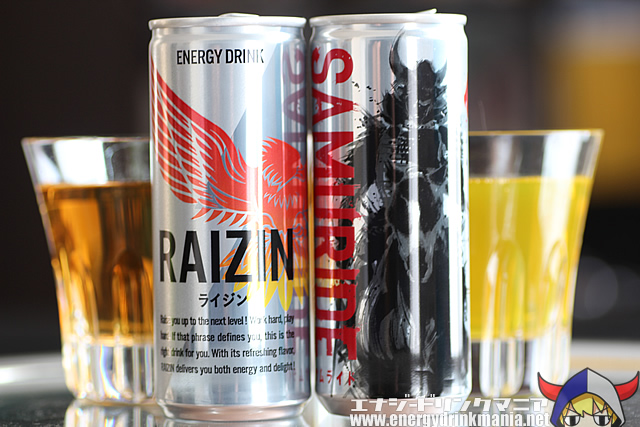
From the front, both designs feature large illustrations.
Additionally, they both include the English product names along with Katakana.
In the past, I often saw on social media that RAIZIN was mistakenly referred to as "Rising" and SAMURIDE as "Samurai," as the official names were not widely known.
Perhaps, because the pronunciation in older commercials was difficult to understand, and the illustrations were so strong, some people might have mistakenly learned the wrong official name.
Especially in the old RAIZIN commercials, the "N" in "RAIZIN" sounded like a nasal sound, making it seem like there was a "G" attached. By the way, even Red Bull was sometimes called "Red-Bloo" (why? w), so once they become more widely known, it probably won’t be a big deal.
After RAIZIN was renewed and released in the silver 250ml can, even though I don’t drink these two much, I often wonder, "Which is which?" because the taste is so similar.
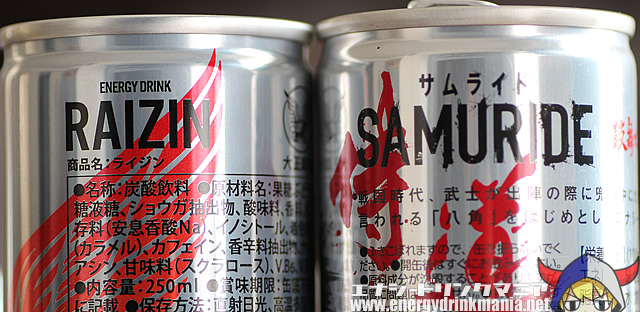
On the back, the reflective silver can with black product names and red text looks very similar.
People who don’t drink energy drinks much might not even realize they are two different products.
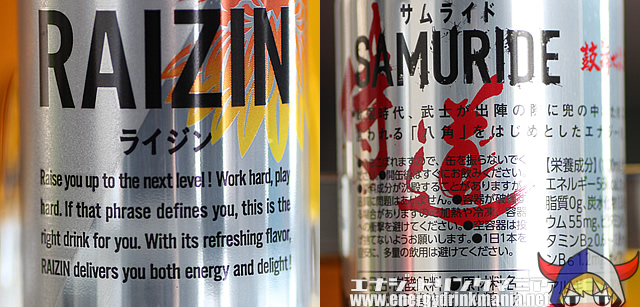
For the product concept, SAMURIDE’s focus is on a traditional Japanese theme with an explanation written in Japanese to highlight its Japanese heritage.
On the other hand, RAIZIN’s English text conveys a "we support you!" vibe, which, if written in Japanese, might seem a little annoying, but the tone makes it feel less so. RAIZIN seems less concerned with Japanese identity and aims to stand up to other international energy drinks.
There’s no clear winner here, but you can somewhat sense the direction each product is going in.
Comparison of the Energy Ingredients of RAIZIN and SAMURIDE
The caffeine content is 80mg for SAMURIDE and 36mg for RAIZIN.
Neither has an extremely high caffeine content. Personally, whether it’s 80mg or 160mg, I don’t really mind. I think promoting the strength of a drink based on caffeine content is a bit pointless. I don’t have a sense that high caffeine means better, and lower caffeine means weak. If you’re going over 300mg, then sure, you should highlight it (with caution, of course).
Both drinks contain ginger extract and spice extracts, and it’s interesting that they are so similar in this regard.
RAIZIN uses artificial sweeteners like sucralose and is slightly lower in calories and carbs compared to SAMURIDE.
SAMURIDE, possibly in consideration of other domestic energy drinks, contains 300mg of arginine and differentiates itself by including star anise and jujube.
[RAIZIN] Lower in calories, less caffeine, spicier
[SAMURIDE] Standard caffeine, 300mg of arginine, unique herb blend
That’s the gist of it.
RAIZIN vs SAMURIDE Summary
For some reason, domestic energy drinks in Japan seem to have a strong image of adding ginger or other spices. I’m curious why major domestic manufacturers have chosen this direction, but it’s clearly a characteristic of these products. In other words, there’s no point in mimicking the flavor of existing energy drinks, so after experimenting, it seems they’ve landed on a flavor profile with a "strength" or "stimulus" that feels similar to higher-end nutritional drinks.
There may be other flavors that deviate from the traditional, like NOS or FULL THROTTLE, but so far, this is the direction that major domestic manufacturers have taken.


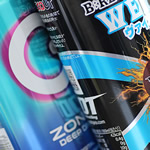
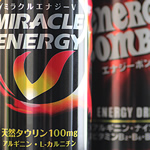
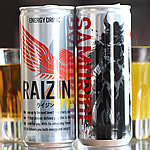
 Since 2001, Energy Drink Maniac has been drinking energy drinks and providing the most detailed reviews of global energy drinks based on firsthand research.
Since 2001, Energy Drink Maniac has been drinking energy drinks and providing the most detailed reviews of global energy drinks based on firsthand research.